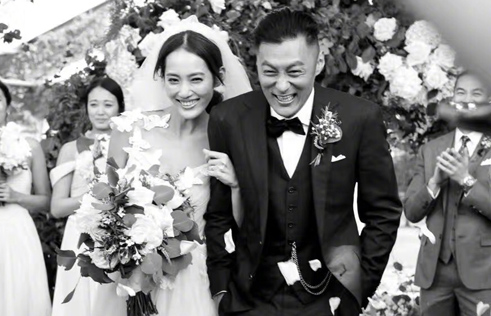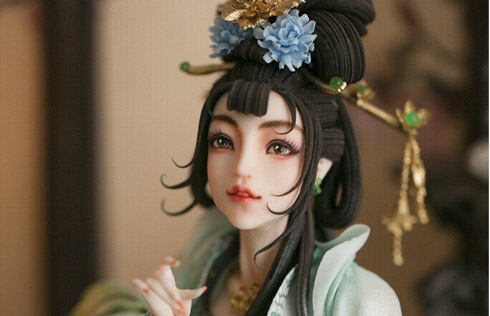A journey without end
|
 |
|
Prolific artist San Bao premieres his musical Wanderings of Sanmao on Saturday in Beijing.[Photo/China Daily]? |
One of the nation's most prolific composers, San Bao remains as enthusiastic about creating music today as when he started out two decades ago. Chen Nan reports.
For San Bao the biggest surprise in life these days is not that, at 43, he continues to be one of the nation's most sought-after composers, making music for award-winning films, such as Zhang Yimou's The Road Home and Feng Xiaogang's Big Shot's Funeral, and producing platinum sellers with the likes of the legendary Na Ying and Mao Amin. Or even that he remains a prolific artist two decades into his career, turning out two original musicals in five years.
Rather, it's his enduring enthusiasm for creating music, despite a serious heart attack in October 2007.
"I'm still thirsty when it comes to music and have so many ideas," he says.
His new musical, Wanderings of Sanmao, will premiere on Saturday in Beijing and tour 17 other cities till October.
Ask San Bao a question, say, about rhythm or his songwriting process, and an hour later you will walk away with loads of information on music, history and technology, as well as a reading list to help you follow up.
In a recent interview, the long-haired musician discussed enthusiastically his musical evolution and explained his thinking behind Wanderings of Sanmao, his third collaboration with scriptwriter Guan Shan.
It was when San Bao was working on his previous musical, Butterfly, in 2005, that the image of Sanmao popped into his head, as he and Guan discussed future plans.
As a father of two young girls, he says he knows first-hand the difficulties of keeping kids entertained. But he was surprised to note that his daughters loved reading comic books about Sanmao, a homeless boy created by Zhang Leping in 1935. The name Sanmao refers to his three strands of hair. When Zhang created the comic series, he wanted to dramatize the chaos wrought by war. He wished to express his concern for young victims of the war, particularly street orphans.
"My mum was born in the 1930s and she loves Sanmao. I was born in the 1960s and I am also a big fan of Sanmao. Now, my daughters, who were born after 2000, and many 20 somethings are also fans of the comic series. I know the series was also turned into a cartoon series on TV a few years ago. All this proves that Sanmao is loved by, and has influenced, generations in China," San Bao says.
As a music composer, his simple and bold original style has a child-like quality that is well suited to a musical. It took him and Guan just a year to create the script and music.
The musical remains faithful to the book. It focuses on Sanmao's poverty, especially his starvation. Set in Shanghai in the 1930s and early 1940s, it shows the little boy trying to make a living by pulling rickshaws and polishing the shoes of the rich. He meets all kinds of people - those who are like him and those who mock or even beat him up.
"Sanmao is a powerful child, even though his life is miserable. You can feel the hope and warmth in his eyes, and this is what the music captures," San Bao explains.
"I use clean and simple rhythms to create his image. I choose a different kind of music for the other characters, the good and bad guys, to reflect their characteristics. The musical is not a sad story. I inject a lot of humor into it, and some light-hearted music, to show Sanmao's naivete and innocence."
San Bao points out that while the musical is based on a child, it is aimed at both children and adults. It presents an adult world, as seen through the eyes of Sanmao.

For San Bao, the most difficult part of making this musical was choosing the actors - not only the main character Sanmao, but also the supporting roles. He first thought of casting the children studying Peking Opera at Beijing Academy of Theater Arts, but settled instead on young actors from China Children's Art Theater.
"The child actors, all aged between 10 and 12, fit the roles but lacked the ability to create and build up the roles by themselves. They are good at following instructions but we don't have the time to teach them one by one," San Bao says.
San Bao, whose original name is Na Risong, comes from Inner Mongolia autonomous region. Influenced by his mother Xin Huguang, a famous musician known for her epic work, Ga Da Mei Lin, San Bao started playing the violin at 4, and the piano at 11. He studied conducting at the Central Conservatory of Music in 1986 and has worked with many established symphony orchestras of China.
San Bao is very fond of the music of ethnic groups, especially that of his hometown. He has collaborated with many Chinese artists, such as renowned dancer/choreographer Yang Liping and her epic dance drama, Searching for Shangri-la. His training in classical music also helped him distinguish himself in composing soundtracks for movies and TV series.
"I have been interested in all genres of Western music - from rock, to pop and jazz - from a young age. But when I compose, I still favor traditional Chinese music," he says. "It is the backbone of Chinese culture and continues to hold it up."
San Bao admits he has changed since the birth of his daughters, and after his heart attack. And these changes are reflected in his work. He says he used to be a pessimist and his music was usually grand and sentimental. Now, he is calm and at peace, as he spends more time with his family and exercising.
Describing his daily routine, he says he gets up at 11 am and writes music till 9 pm, calling it a day at 2 or 3 am.
"In my everyday life, I'm not at all adventurous," he laughs. "I take the same walk every day and eat the same kind of food. I am healthy and my brain works fast, like a young man's."
Pausing for just a bit, he says: "Of course, I am also slowing down as a musician. My biggest interest is still the musical. It's not part of China's mainstream culture, but I want to change this," he says.
His next project is also a musical, on the matouqin, or morin khuur, the traditional Mongolian horse-head fiddle. "It's the most important instrument of the Mongolian people, and even a symbol of the place," he says.
"The morin khuur most people know of today is not the same as the original. The instrument has changed into something else. I want to restore it to its original form."






















